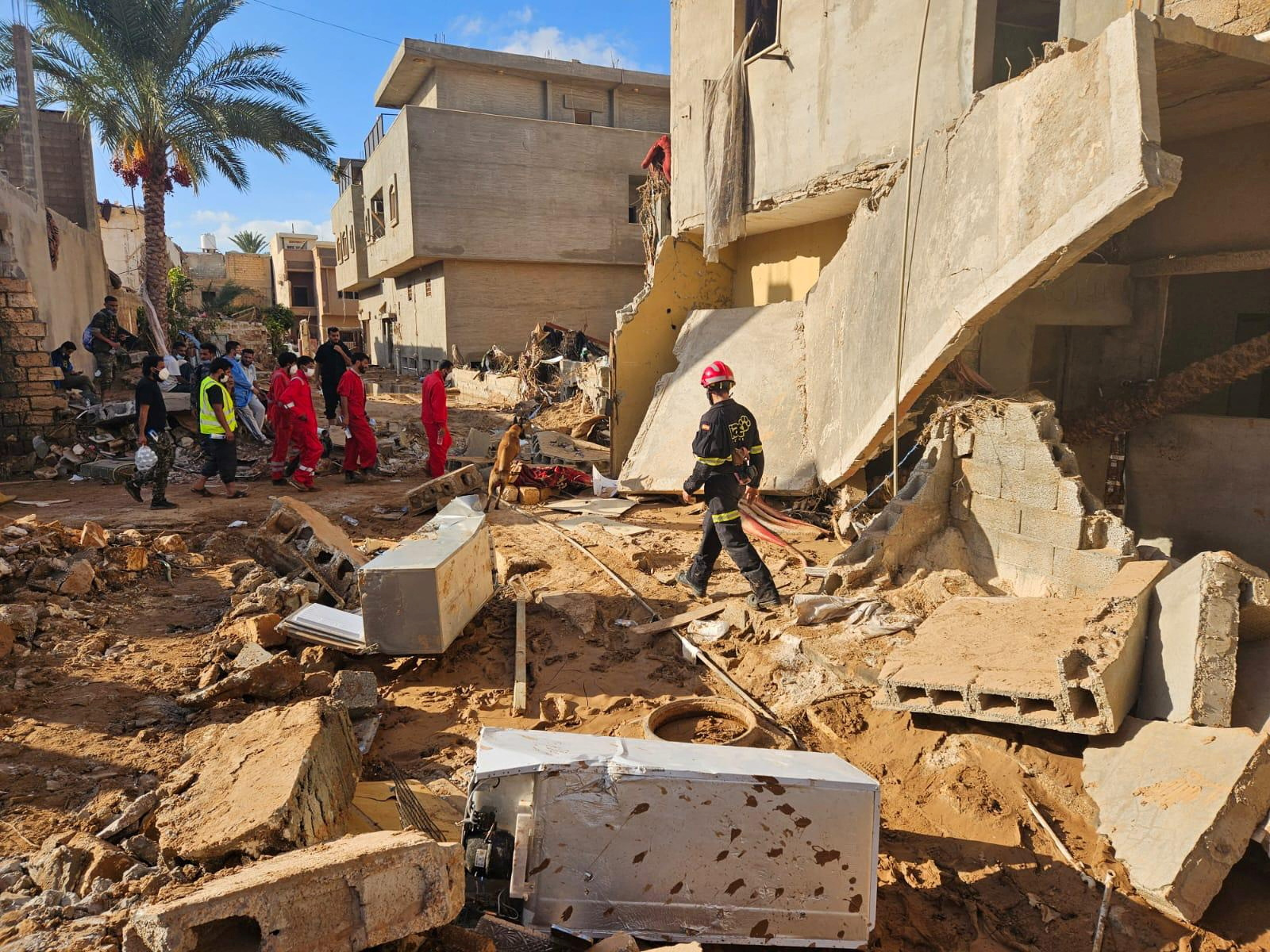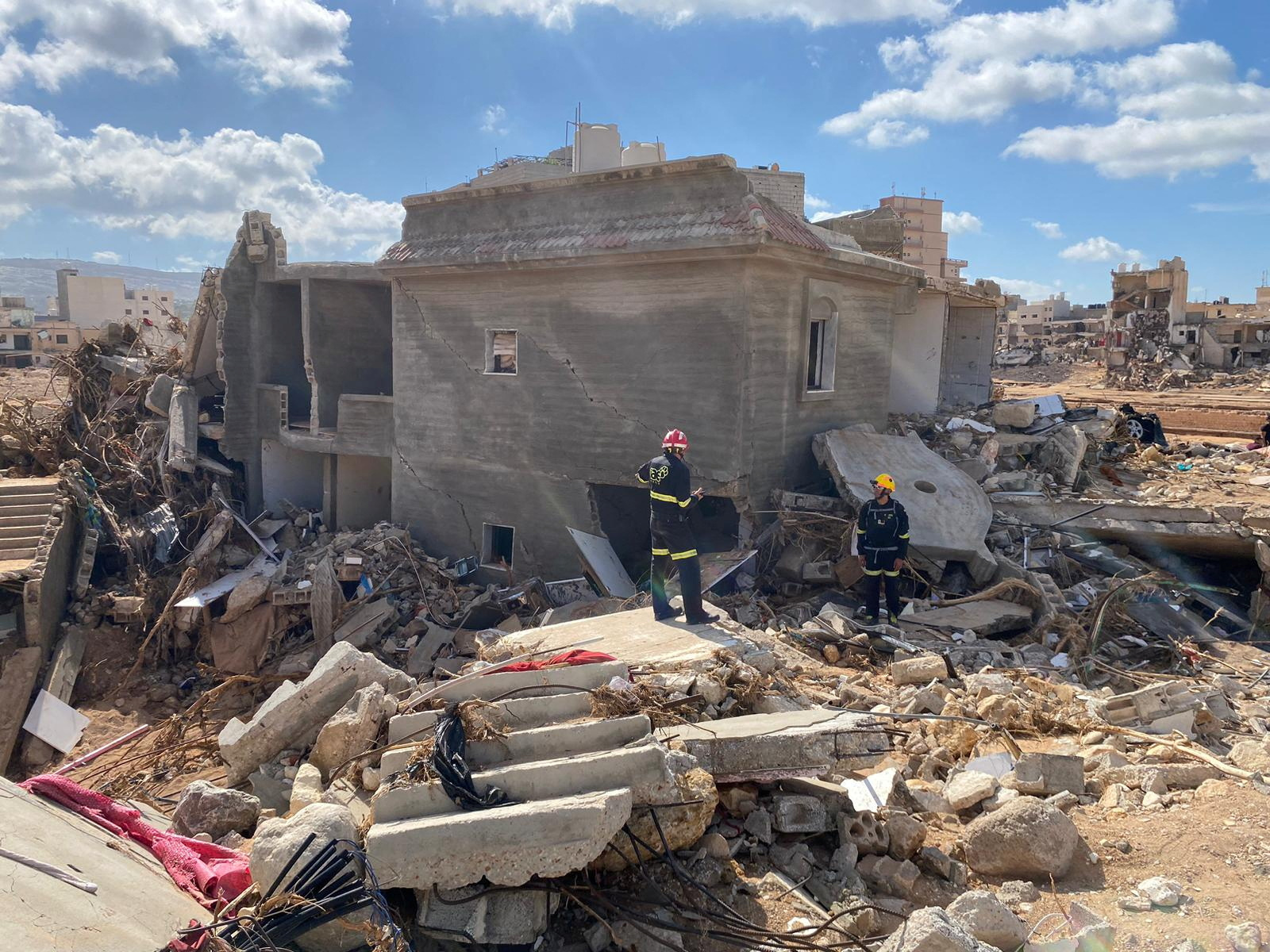At least 11,300 people lost their lives in Libya when two dams above the eastern city of Derna burst early Monday, overwhelmed by the torrential rain brought by a storm. Satellite images show the destruction caused by the resulting flood, as the surging water swept away entire sections of the low-lying downtown area of Derna, carrying them into the waters of the Mediterranean Sea.
What Really Happened
Many said they heard loud explosions as the dams exploded. A flood several meters high rolled down a mountainside into the city. Images made about 400 miles above the earth’s surface show that the storm left a brown layer of mud and dirt across the city.
Untold numbers are buried under mud and debris that includes overturned cars and chunks of concrete. The death toll soared to 11,300 as search efforts continue, Marie el-Drese, secretary-general of the Libyan Red Crescent, told The Associated Press by phone Thursday.
The satellite pictures show dirt and debris stretching out to sea into Derna’s shallow waters, which appeared visibly brown near the shoreline. Many bodies washed out to sea have come back with the tide, rescue workers say.
Aftereffects of floods
The floods have displaced at least 30,000 people in Derna, according to the UN’s International Organization for Migration, and several thousand others were forced to leave their homes in other eastern towns, it said.
Bridges and other basic infrastructure have also been wiped out, especially buildings near the Wadi Derna river. Because of the damage to roads, aid only began trickling into the city on Tuesday evening.
Aid groups have warned of the growing risk posed by the spread of disease that could compound the humanitarian crisis in Libya, as hopes of finding more survivors fade days after deadly flooding.
Relief Efforts
Aid groups like Islamic Relief and Doctors Without Borders (MSF) have warned that the upcoming period could see the spread of disease as well as grave difficulties in delivering aid to those most in need. Islamic Relief warned of a “second humanitarian crisis" after the flood, pointing to the “growing risk of water-borne diseases and shortages of food, shelter and medicine".
“Thousands of people don’t have anywhere to sleep and don’t have food," said Salah Aboulgasem, the organisation’s deputy director of partner development.
“In conditions like this, diseases can quickly spread as water systems are contaminated," he added. “The city smells like death. Almost everyone has lost someone they know."
In a Friday night news conference, Ahmed al-Mesmari, the spokesman for east-based military strongman Khalifa Haftar pointed to “enormous needs for reconstruction". Meawhile, the United Nations launched an appeal for more than $71 million to assist hundreds of thousands in need and warned the “extent of the problem" remains unclear.
Warning Signs
When hydrologist Abdul Wanis Ashour began researching the system of dams protecting the eastern Libya port town of Derna 17 years ago, the peril facing residents was already no secret, he said.
“When I gathered the data, I found a number of problems in the Derna Valley: in the cracks present in the dams, the amount of rainfall and repeated floods," he told Reuters. “I found also a number of reports warning of a disaster taking place in the Derna Valley basin if the dams were not maintained."
In an academic paper he published last year, Ashour warned that if the dams were not urgently maintained, the city faced a potential catastrophe. “There were warnings before that. The state knew of this well, whether through experts in the Public Water Commission or the foreign companies that came to assess the dam," he said. “The Libyan government knew what was going on in the Derna River Valley and the danger of the situation for a very long time."
The “catastrophe" that Ashour had warned of in the pages of the Sebha University Journal of Pure & Applied Sciences, unfolded just as he said it would.
(With inputs from agencies)



